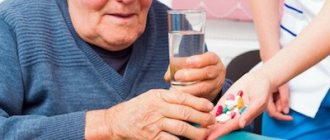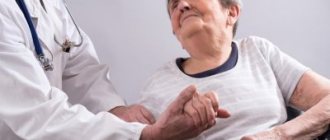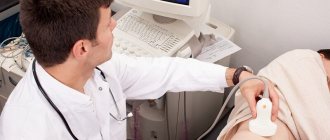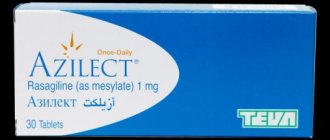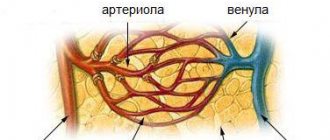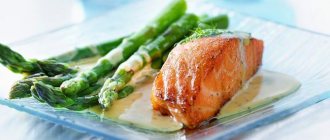Idiopathic parkinsonism syndrome (Parkinson's disease) is an incurable neurological disease in which dopamine neurons die.
The exact cause of the disease has not yet been established. Among the provoking factors are heredity, stress and other pathologies of the nervous system.
The role of nutrition in Parkinson's disease, although indirect, cannot be discounted. An unhealthy diet with excess fats and carbohydrates leads to atherosclerosis.
Atherosclerosis increases the risk of developing Parkinson's disease. Therefore, one of the components of therapy for patients with shaking paralysis is diet.
Basic principles
As such, there is no strict diet for parkinsonism.
Doctors recommend adhering to a low-cholesterol diet to reduce the risk of the formation of atherosclerotic vascular plaques.
In addition, calcium and iron accumulate in the patient’s cells against the background of zinc deficiency.
The patient's diet should be tailored to these features. The Mediterranean diet is best suited, where the basis is vegetables, herbs, seafood, and vegetable oil.
When drawing up a menu, you should take into account the person’s condition and the stage of the disease. Many patients suffer from constipation due to decreased intestinal motility.
To normalize digestion, you need to eat vegetables, fresh herbs, cereals, and dairy products.
Patients also experience difficulty chewing and swallowing food; in this case, the method of preparing dishes is important. It is preferable to cook puree soups, liquid porridges, and steamed cutlets.
Providing the body with vitamins and minerals plays an important role, since catabolism processes predominate in the body.
In the later stages of the disease, levodopa is prescribed, which interferes with the absorption of nutrients. Therefore, food should have a high content of the following microelements:
- Vitamin C , which has a powerful antioxidant effect. Contained in citrus fruits, bell peppers, rose hips.
- B vitamins . They stimulate the production of dopamine. Sources include: potatoes, carrots, oatmeal, spinach.
- Nicotinic acid (B3) improves immunity and restores nerve conduction. Present in cereals, nuts, liver.
- Lipoic acid acts as an antioxidant and is found in legumes, liver, and sour cream.
- Coenzyme Q10 stimulates the production of energy by cells, which prevents the death of neurons. Sources are: eggs, chicken, fruits, vegetables, fish.
- Caffeine . Blocks receptors that promote the release of glutamate (glutamate damages brain neurons). Doctors advise drinking 1-2 cups of natural coffee every day, provided that the patient does not have heart problems.
Thus, the basic principles of nutrition for parkinsonism are:
- Fractionality. Food is taken 5-6 times a day in small portions.
- Balanced in nutrients, enriched with vitamins.
- Compliance of the method of preparing dishes with the patient’s condition.
- Reducing the amount of animal fats.
- The influence of nutrition on the patient's body.
The choice of dishes for the patient is of great importance.
It is better to choose unbreakable plates that are fixed to the table with suction cups. For human safety, do not use forks, but spoons with a thick handle that is comfortable to hold in your hand. Sippy cups with straws are suitable for drinking.
List of new generation products and solutions for droppers
Among the latest generation of drugs for Parkinson's disease, Madopar GSS and Madopar fast-acting tablets (dispersible) are distinguished.
Compared to the previous generation of drugs, they help solve some problems that arise during the treatment of Parkinson's patients.
For example, many Parkinson's patients suffer from bladder dysfunction, which leads to frequent trips to the toilet at night.
Madopar GSS significantly smoothes this symptom.
The fast-acting dispersible Madopar is absorbed 2 times faster, which alleviates the morning conditions of patients with parkinsonism.
The drugs are available in tablets and capsules. Admission rules:
- Madopar GSS is taken in the same way as regular Madopar, but the total daily dosage can be increased by 30-50%;
- fast-acting Madopar is dissolved with a small amount of water and the resulting suspension is taken orally.
Medicines are available by prescription.
Amantadine is often prescribed to stimulate the release of dopamine . It is effective in the initial stages of the disease and allows you to delay the administration of levodopa. It is also used when it is necessary to stop taking levodopa.
A popular drug based on amantadine is PC Merz for injection. 500 ml of solution is prescribed intravenously 1-3 times.
About the creation of a new drug for the treatment of Parkinson's disease in this video:
The effect of proper food on the patient's body
Properly organized nutrition helps improve the patient’s condition and slow down the progression of the disease . The patient's unpleasant symptoms are reduced, appetite is restored, and digestion is normalized.
If the body receives enough nutrients, the patient feels cheerful, can independently perform the usual work, and take care of himself.
Proper nutrition helps eliminate symptoms of depression, improve mood and the desire to communicate with others.
Also, by reducing animal fats and simple carbohydrates in the diet, weight, blood pressure, and glucose levels are normalized.
This also leads to a reduction in the negative manifestations of the disease.
Some doctors recommend following a ketogenic diet . It is based on minimizing carbohydrates in the diet (up to 100 g per day). When there is a deficiency of carbohydrates, the body uses fats as an energy source.
During the breakdown of fats, ketone bodies are released, which affect brain activity.
As a result, the production of free radicals is inhibited, the synthesis of antioxidants is enhanced, and the death of brain neurons is stopped.
B vitamins
Active substances take part in metabolic processes and are useful for Parkinson's disease, as they help regulate cellular metabolism. They are water-soluble compounds and have a number of basic properties:
- Normalization and maintenance of the functioning of the nervous system.
- Improves the functioning of the heart and blood vessels.
- Restores the activity of the gastrointestinal tract.
- Positively affect the condition of the skin.
- Normalize emotional state, resist stressful and depressive mood.
- They take part in the growth of cellular forms, energy exchange, and the activity of the muscular system.
- Strengthen the immune response, increase the body's reactivity to microbial agents.
Each of the vitamins recommended for Parkinson's disease is given a number and name.
Vitamin B1
Thiamine comes with food, absorption occurs in the intestines. Plays an important role in the metabolism of carbohydrates, fats and proteins. Its greatest concentration is in skeletal muscles. In Parkinson's pathology, it supports the functioning of the brain and heart muscle. List of foods rich in thiamine:
- legumes: beans, peas, chickpeas, green peas;
- the shell of cereal grains;
- soy and spinach;
- wholemeal wheat flour bread;
- potatoes, carrots, white cabbage;
- buckwheat and oatmeal;
- offal: liver, kidneys, brain;
- yeast.
It is also recommended to consume pork, beef and milk for Parkinson's disease. In the pharmaceutical network, thiamine is available in the form of tablets, capsules and injection solutions.
Vitamin B3 or PP
Nicotinic acid (niacin) is involved in many redox reactions. Relieves vasospasm of blood vessels in the brain. Improves blood microcirculation. Acts as an anticoagulant, preventing thrombus formation. Relieves intoxication syndrome when used in combination.
Products enriched with nicotinic acid:
- yeast;
- chicken and pork liver;
- walnuts, peanuts, hazelnuts;
- chicken and quail egg yolk;
- protein food;
- all types of legumes;
- grains and green vegetables.
Niacin enters the body of a person with Parkinson's disease through food, and can also be synthesized by the bacterial flora of the small and large intestine. For patients with atherosclerosis of blood vessels, the desired dose of this vitamin per day is 2-3 grams.
Vitamin B6
Pyridoxine takes an active part in the metabolism of dopamine, serotonin and adrenaline. Regular intake is beneficial in Parkinson's disease due to the overall improvement of the condition. Grocery list:
- grain sprouts;
- potatoes, sweet potatoes, spinach;
- cauliflower and white cabbage;
- tomatoes, carrots;
- lemons, avocados and oranges.
Pyridoxine is able to be synthesized independently in the intestines. In case of parkinsonism, it eliminates insomnia, weakness, pale jaundice of the skin, and congestion in the corners of the mouth. Resists the appearance of anemia with a decrease in hemoglobin and red blood cells. Eliminates signs of irritable bowel syndrome, when diarrhea alternates with persistent constipation.
Vitamin B12
Cyanocobalamin prevents the development of neurotoxic effects. After a series of scientific studies, it was revealed that the use of one of the biochemical forms of cyanocobalamin can inhibit the activity of LRRK2 kinase. The use of vitamin B12 mitigates the manifestations of instability of cells, cytoplasmic membranes and mitochondria due to dopamine imbalance.
The largest amount of cyanocobalamin is found in pork and beef liver, kidneys, fatty fish, cod and octopus. It can be produced by microorganisms inside the large intestine, but is not absorbed in the proper amount.
Important! People who adhere to strict vegetarianism are strongly recommended to establish a regular supply of cobalamin supplements throughout their lives.
Pros and cons of the diet
The Mediterranean type of diet has no contraindications and is therefore recommended for all patients.
Pros of this diet:
- variety, balance;
- easily tolerated by patients;
- can be used for a long time;
- restores metabolism, improves well-being.
There are practically no downsides, with the exception of significant financial costs for seafood and fresh vegetables in the winter season.
The ketogenic diet has more contraindications: diabetes, heart disease, kidney disease.
The advantages include high efficiency, a significant reduction in the symptoms of parkinsonism (tremor, muscle rigidity, autonomic disorders).
Among the disadvantages, they note that patients do not tolerate the keto diet well; due to the small amount of carbohydrates, they feel lethargy, loss of strength, and mood.
Recommendations for choosing a diet
People with Parkinson's disease often experience difficulty swallowing. In such a situation, it is recommended to grind the food to a puree. If you have difficulty swallowing, exclude fried and rough foods from the menu.
If the patient experiences edema, it is necessary to exclude salt from the diet. It promotes the accumulation of excess fluid. The menu should include dried fruit compotes and apples. A fruit drink made from cranberries also helps eliminate swelling.
If the patient has constipation, the diet is enriched with the following products:
- fresh vegetables;
- fruit salads;
- foods that contain a lot of fiber.
A patient suffering from constipation is advised to drink enough clean water.
If nausea occurs, you should eat small portions, slowly. It is recommended to separate cold and hot food intake. Juice squeezed from citrus fruits is excluded from the daily menu. The drink contains a large amount of acid. It is necessary to limit as much as possible the consumption of foods that increase nausea. These include:
- fried food;
- products made from butter flour;
- fatty food.
Grocery list
Prohibited
The following products are strictly prohibited for people suffering from Parkinson's disease:
- Fast food . Such foods contain a lot of trans fats, salt, and monosodium glutamate. Fats interfere with the absorption of levodopa medication and contribute to allergic reactions.
- Sausage , sausage products. They contain large amounts of salt, preservatives, and saturated fats.
- Simple carbohydrates (sugar, jam, sweets, cakes). Increases sugar levels.
- Mayonnaise, ketchup and other industrial sauce.
- Dishes prepared by smoking, marinating, deep-frying .
- Coarse vegetables (radishes, radishes) due to difficult digestion.
- Full-fat dairy products (cheese, homemade sour cream, cream)
- Alcohol . After drinking alcohol, the symptoms of the disease intensify.
The rest of the products are not prohibited, but some of them should be consumed sparingly:
- Products containing iron . Iron has been shown to contribute to neuronal damage.
- Animal fats (pork, lamb, goose, lard). They increase the risk of progression of the pathology. Animal fats are replaced with vegetable ones.
- Protein food. Interferes with the absorption of levodopa.
- Nuts, seeds . Can be added to food in crushed form.
Allowed
The list of permitted products is quite wide. The lion's share of the diet consists of plant foods and fish. The menu must include:
- Fresh, stewed vegetables, herbs.
- Legumes (if they do not cause flatulence).
- Fruits and berries, especially those containing vitamin C (oranges, dogwoods, currants).
- Fish, seafood. Sea kale is also useful.
- Soups with vegetable broth. If the patient has difficulty swallowing, it is better to prepare puree soup.
- Cutlets from turkey, chicken, lean fish.
- Wholemeal bread.
- Low-fat dairy products (kefir, cottage cheese, fermented baked milk, natural yogurt).
- Porridge with water (oatmeal, buckwheat, wheat).
- Eggs, omelettes.
- Nuts, dried fruits (scrolled through a meat grinder).
- Rosehip decoction, cranberry juice, herbal teas, clean water (up to 2 liters per day).
- Sunflower, olive, linseed oil.
- Jelly, jelly based on berries and fruits.
Find out more about Parkinson's disease:
- forms of the disease, diagnostic methods;
- frequent complications of the disease, as well as the patient’s life expectancy;
- whether the patient is given a disability, what group, how to register it;
- disease prevention measures.
Diet
In most cases of Parkinson's disease, doctors do not restrict patients to a strict diet. A varied diet enriched with nutrients is recommended. The exception is when a person has concomitant diseases that require dietary adjustments.
It is advisable for patients with Parkinson's tremor to take certain classes of foods that help produce dopamine and inhibit the destruction of nerve cells.
Product groups
| Group | Scroll |
| Omega-3 polyunsaturated fatty amino acids |
|
| Macronutrient magnesium | Oatmeal, buckwheat, legumes (beans, chickpeas), nuts. |
| Flavonoids (plant pigments) |
|
Recent studies note the significant role of vitamins belonging to group B and vitamin D. Vitamins should be taken in Parkinson's disease not as a panacea, but as a complementary and supportive component of nutrition. There are different combinations of fortified complexes available for purchase:
- Vitrum;
- Gerimaks;
- Neuromultivitis;
- Supradin;
- Fenyuls.
Vitamins for Parkinson's can be in pure form or in a complex; in addition, the specific application differs - oral administration or parenteral administration.
Sample menu
The patient's menu can be varied, since there are no strict restrictions. 5-6 meals a day should become a way of life for the patient.
Sample menu for the week:
| Day of the week | Breakfast | Lunch | Dinner | Snack | Dinner |
| Monday | Wheat porridge, a handful of berries, tea | Yogurt | Vegetable soup, chicken cutlet, stewed zucchini | Boiled egg, bread, compote | Vegetable stew, jelly |
| Tuesday | Cheesecakes, sour cream, coffee | Banana | Pumpkin soup, chicken pilaf | Jelly, rosehip decoction | Fish, vegetable salad |
| Wednesday | Omelette, cheese sandwich, tea | Kissel, bread | Vegetarian borscht, fish balls, rice | Fruit salad, herbal tea | Steamed chicken breast, vegetables, tea |
| Thursday | Buckwheat porridge, vegetable salad, coffee | Baked apple with cottage cheese | Noodle soup, lazy cabbage roll, vegetables | Kefir, bread with cheese, compote | Fish cutlet, mashed potatoes, tomato |
| Friday | Curd casserole, cranberry juice | Vinaigrette, tea | Vegetable soup, stewed potatoes with chicken | Rice pudding, jelly | Buckwheat, vegetable stew, rosehip decoction |
| Saturday | Carrot salad, poached egg, slice of bran bread | Berries, yogurt | Green pea soup, fish, rice | Cottage cheese, cranberry juice | Turkey cutlet, vegetables, tea |
| Sunday | Curd banana pudding, jelly | Yogurt, fruit, tea | Vegetable soup, turkey stew with vegetables | Sandwich with cheese, berries | Steamed fish, fresh herb salad, tea |
Compatibility of drugs and food
Some products are characterized by the effect of reducing the absorption of active substances and, as a result, interfere with the dynamics of treatment for parkinsonism. To avoid unwanted interactions, you must adhere to the interval between doses:
- The effectiveness of levodopa is reduced when taken with certain products. This is cheese, white cabbage, seafood, chocolate. Medicines with this composition are taken after meals with a sufficient amount of water.
- When prescribing levodopa and iron supplements in parallel, it is necessary to take a break between taking medications.

